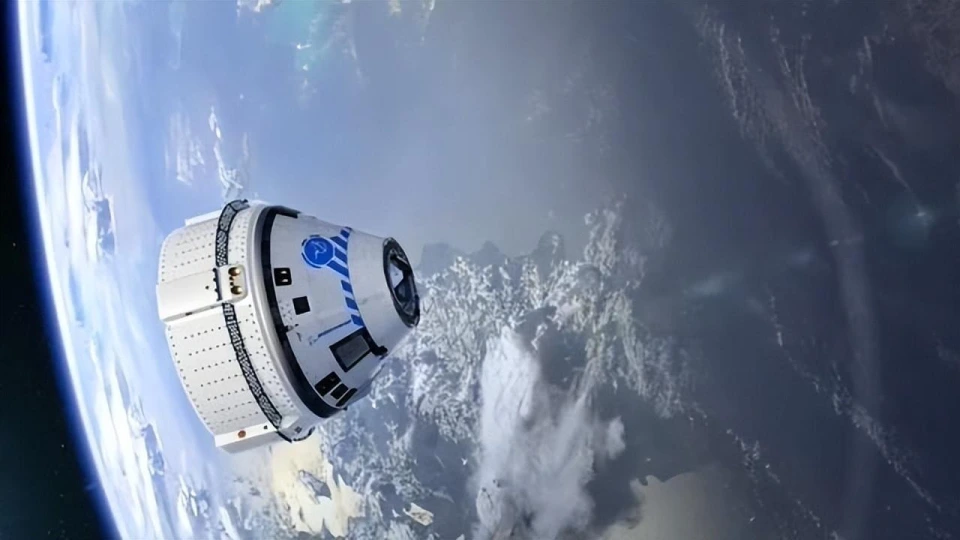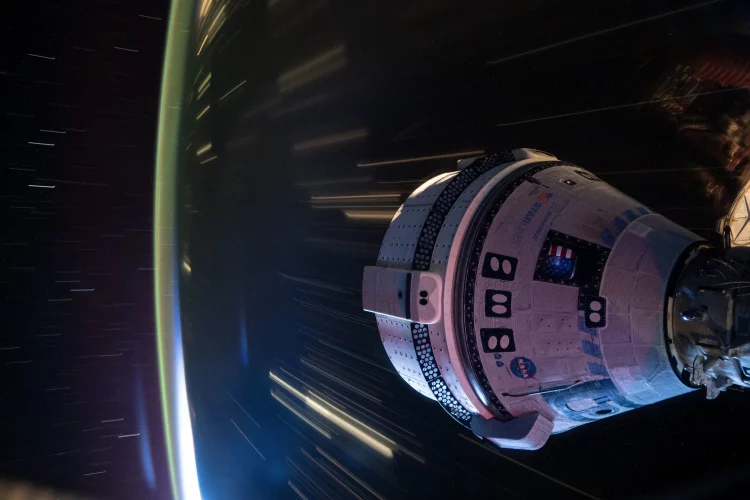Introduction
The collaboration between NASA and Boeing represents a significant milestone in the evolution of spaceflight technology. The recent flight test mission briefing streamed by NASA offers an in-depth look at a critical phase in this partnership, highlighting advancements in spacecraft design, testing procedures, and future missions. This article provides a comprehensive analysis of the mission, its objectives, technological innovations, and its broader implications for space exploration.
Historical Context of NASA and Boeing’s Partnership
NASA and Boeing’s collaboration has been a cornerstone of space exploration and aerospace innovation for decades. Since the early days of spaceflight, Boeing has played a crucial role in developing spacecraft, rockets, and related technologies for NASA.
1. Early Collaborations
- Apollo Program: During the Apollo program, Boeing was instrumental in developing the Saturn V rocket, the most powerful rocket ever flown. This rocket was pivotal in carrying astronauts to the Moon and returning them safely to Earth.
- Space Shuttle Era: In the Space Shuttle era, Boeing contributed to the development of various shuttle components, including the external tank, which was essential for launching astronauts and payloads into space.
2. Modern Partnerships
- Space Launch System (SLS): Boeing has been a key partner in the development of NASA’s Space Launch System, a new heavy-lift rocket designed to take astronauts deeper into space than ever before. The SLS will be crucial for missions to the Moon, Mars, and beyond.
- Commercial Crew Program: Boeing’s CST-100 Starliner spacecraft, developed under NASA’s Commercial Crew Program, aims to transport astronauts to and from the International Space Station (ISS). This program represents a shift towards public-private partnerships in spaceflight.
Mission Overview: Objectives and Goals
The recent flight test mission is a crucial step in validating Boeing’s spacecraft and systems. The objectives of this mission include:
1. Testing Spacecraft Systems
- Launch and Ascent Performance: Evaluating the spacecraft’s performance during launch and ascent phases is critical for ensuring that it can safely reach orbit and meet mission requirements.
- In-Orbit Operations: The mission tests the spacecraft’s systems and capabilities while in orbit, including navigation, communication, and life support systems.
- Docking and Undocking Procedures: Successful docking with the ISS and subsequent undocking are vital for demonstrating the spacecraft’s ability to perform these operations under real conditions.
2. Validating Safety and Reliability
- Crew Safety: Ensuring the safety of astronauts is paramount. The mission evaluates safety systems and procedures to protect the crew in various scenarios, including emergencies.
- System Redundancies: The spacecraft is equipped with redundant systems to ensure reliability. Testing these redundancies helps confirm that the spacecraft can handle potential failures or malfunctions.
3. Gathering Data for Future Missions
- Performance Data: The mission provides valuable data on the spacecraft’s performance, which will be used to refine and improve future missions.
- Mission Protocols: Lessons learned from the flight test will inform protocols and procedures for upcoming missions, enhancing overall mission success and safety.
Technological Innovations and Developments
The flight test mission showcases several technological innovations that highlight the advancements in spacecraft design and spaceflight capabilities.
1. Spacecraft Design and Engineering
- Advanced Materials: The spacecraft features advanced materials that enhance its structural integrity and thermal protection. These materials are designed to withstand the harsh conditions of space travel and re-entry.
- Modular Design: The spacecraft’s modular design allows for flexibility and adaptability. This design approach enables the integration of new technologies and improvements as they become available.
- Enhanced Avionics: The spacecraft is equipped with state-of-the-art avionics systems that provide precise navigation, communication, and control. These systems are essential for ensuring accurate mission execution and spacecraft performance.
2. Safety and Reliability Features
- Launch Escape System: The spacecraft is equipped with a launch escape system designed to protect the crew in the event of a launch emergency. This system can rapidly propel the spacecraft away from the launch vehicle to ensure crew safety.
- Automated Systems: Automated systems are employed to manage various aspects of the spacecraft’s operations, including docking and undocking. These systems reduce the risk of human error and enhance mission reliability.
- Redundant Systems: Redundant systems are integrated into the spacecraft to ensure that it can continue to operate even if one or more systems fail. This redundancy is crucial for maintaining safety and mission success.
Implications for Future Space Exploration
The success of the flight test mission has significant implications for the future of space exploration, both for NASA and the broader space industry.
1. Advancements in Space Travel
- Deep Space Missions: The technology and data gathered from the flight test mission will contribute to the development of spacecraft capable of supporting deep space missions. This includes missions to the Moon, Mars, and beyond.
- Human Exploration of Mars: The advancements in spacecraft technology are essential for supporting human exploration of Mars. Successful testing and validation of spacecraft systems are critical for ensuring the safety and success of future Mars missions.
- Sustainable Space Operations: Innovations demonstrated during the mission will contribute to the development of sustainable space operations. This includes improving spacecraft efficiency, reducing costs, and enhancing mission capabilities.
2. Public-Private Partnerships
- Commercial Spaceflight: The flight test mission highlights the growing role of public-private partnerships in space exploration. Collaborations between NASA and private companies like Boeing are driving innovation and expanding opportunities for commercial spaceflight.
- Industry Growth: The success of the mission supports the growth of the aerospace industry and the development of new technologies and capabilities. This growth has the potential to create new markets and opportunities for space exploration and related industries.
- International Collaboration: Advances in spacecraft technology and space exploration often involve international collaboration. The success of the mission may lead to increased opportunities for global partnerships in space exploration and research.

The Role of NASA’s Streaming and Public Engagement
NASA’s decision to stream the flight test mission briefing underscores its commitment to transparency and public engagement. By providing real-time access to mission updates and briefings, NASA fosters public interest and support for space exploration.
1. Educational Outreach
- Inspiring Future Generations: Streaming the mission briefing helps inspire and educate students and the general public about space exploration. This outreach encourages interest in STEM (Science, Technology, Engineering, and Mathematics) fields and motivates future scientists and engineers.
- Educational Resources: NASA provides educational resources related to the mission, including videos, articles, and interactive content. These resources support classroom learning and engage students in space-related topics.
2. Public Transparency
- Real-Time Updates: Streaming the briefing provides real-time updates on the mission’s progress, allowing the public to follow along and stay informed about key developments.
- Building Trust: Transparency in mission updates helps build trust between NASA and the public. By sharing information about mission goals, progress, and results, NASA fosters a sense of involvement and partnership with the community.
Challenges and Considerations
Despite the advancements and successes associated with the flight test mission, there are several challenges and considerations that must be addressed.
1. Technical Challenges
- Complex Systems Integration: Integrating complex systems and technologies presents challenges, including ensuring compatibility and reliability across various components.
- Testing and Validation: Thorough testing and validation are essential to identify and address potential issues. This process requires meticulous planning and execution to ensure mission success.
2. Cost and Budget Constraints
- Budget Management: Managing costs and budgets for space missions is a critical consideration. Balancing the need for advanced technology with budget constraints requires careful planning and resource allocation.
- Cost-Benefit Analysis: Evaluating the cost-benefit ratio of new technologies and innovations is important for making informed decisions about their implementation and future development.
Looking Ahead: Future Missions and Goals
The successful execution of the flight test mission sets the stage for future missions and goals. NASA and Boeing’s continued collaboration will focus on several key areas:
1. Next-Generation Spacecraft
- Enhanced Capabilities: Future missions will aim to develop and deploy next-generation spacecraft with enhanced capabilities, including improved performance, safety, and efficiency.
- Exploration of New Frontiers: Upcoming missions will focus on exploring new frontiers, including lunar and Martian exploration, as well as investigating other celestial bodies.
2. International Partnerships
- Global Collaboration: NASA and Boeing will continue to collaborate with international partners to advance space exploration and research. These partnerships will enhance the scope and impact of future missions.
- Shared Knowledge: International collaborations facilitate the sharing of knowledge and resources, driving innovation and expanding opportunities for space exploration.
3. Commercial Space Opportunities
- Expanding Markets: The success of the flight test mission will contribute to the growth of commercial space markets, including private spaceflight, satellite services, and space tourism.
- Industry Innovation: Ongoing collaborations between NASA and private companies will drive industry innovation and create new opportunities for technological advancements and space exploration.
Conclusion
NASA and Boeing’s flight test mission represents a significant achievement in the field of space exploration. The mission’s objectives, technological innovations, and implications for future space endeavors underscore the importance of this collaboration in advancing aerospace technology.


















































Discussion about this post